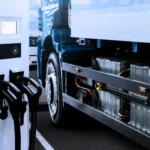In the dynamic landscape of urban transportation, High-Occupancy Vehicle (HOV) Lanes emerge as a strategic solution to alleviate traffic congestion, enhance mobility efficiency, and promote sustainable modes of transportation. This comprehensive exploration delves into the pivotal role of High-Occupancy Vehicle Lanes, unraveling their core principles, operational dynamics, benefits, challenges, and their transformative impact on reshaping the paradigm of modern urban commuting.
The Significance of HOV Lanes
High-occupancy vehicle Lanes are crucial in optimizing road utilization by prioritizing vehicles with multiple occupants, fostering a more efficient and sustainable transportation ecosystem. The significance of HOV Lanes lies in their ability to reduce congestion, improve traffic flow, encourage ridesharing, and contribute to environmental sustainability by minimizing the number of single-occupancy vehicles on the road. These dedicated lanes underscore a commitment to creating a more streamlined and equitable urban mobility experience.
At the heart of High-Occupancy Vehicle Lanes are core principles centered on optimizing the use of road infrastructure. These lanes prioritize vehicles with a designated minimum number of occupants, typically two or more, promoting ridesharing and reducing the overall volume of vehicles on the road. Operational dynamics involve clear signage, entry and exit points, and enforcement measures to ensure compliance with occupancy requirements. The effectiveness of HOV Lanes is contingent on their seamless integration into existing road networks and their ability to incentivize shared transportation.
Benefits of HOV Lanes:
The benefits of High-Occupancy Vehicle Lanes are multifaceted, addressing key challenges in urban transportation and offering a range of advantages for both commuters and the broader community.
Congestion Reduction and Improved Traffic Flow
One of the primary benefits of HOV Lanes is their capacity to reduce congestion and enhance overall traffic flow. By prioritizing vehicles with multiple occupants, these lanes mitigate the impact of single-occupancy vehicles on peak-hour traffic, leading to more efficient and streamlined transportation corridors.
Environmental Sustainability and Air Quality Improvement
High-occupancy vehicle Lanes contribute significantly to environmental sustainability by encouraging ridesharing and reducing the number of vehicles on the road. It leads to decreased carbon emissions, improved air quality, and a positive impact on the overall environmental footprint of urban transportation.
Promotion of Ridesharing and Commuting Efficiency
High-occupancy vehicle Lanes incentivize ridesharing and carpooling, providing commuters with a faster, more reliable alternative to single-occupancy vehicle travel. It reduces individual commuting costs and fosters a sense of community and shared responsibility for urban mobility challenges.
Encouragement of Alternative Transportation Modes
Beyond ridesharing, HOV Lanes encourages using alternative transportation modes, such as buses and vanpools. This diversified approach to urban mobility contributes to a more resilient and adaptable transportation network catering to the community’s diverse needs.
Challenges in Implementing and Optimizing HOV Lanes
While the benefits of High-Occupancy Vehicle Lanes are substantial, their successful implementation and optimization are not without challenges, necessitating a comprehensive approach to address barriers and ensure widespread adoption.
Design and Infrastructure Integration
The effective design and seamless integration of High-Occupancy Vehicle Lanes into existing road infrastructure present a significant challenge. Successful implementation requires careful planning, engineering considerations, and the integration of supportive infrastructure, such as designated entry and exit points and adequate signage.
Enforcement and Compliance
Enforcing occupancy requirements and ensuring compliance with HOV Lane regulations pose challenges. Implementing effective enforcement mechanisms, such as surveillance technologies and penalties for violations, is crucial to maintaining the integrity and purpose of these lanes.
Public Awareness and Attitudinal Shift
The success of High-Occupancy Vehicle Lanes hinges on public awareness and a positive attitudinal shift toward shared transportation. Educating the public about the benefits of ridesharing, the environmental impact of reduced congestion, and the overall efficiency of HOV Lanes is essential for widespread acceptance and adoption.
Future Trends in HOV Lanes
The trajectory of High-Occupancy Vehicle Lanes is marked by transformative trends aimed at further enhancing their efficacy and integration into future urban mobility solutions.
Integration of Intelligent Transportation Systems (ITS)
The integration of Intelligent Transportation Systems (ITS) is a notable trend in the evolution of HOV Lanes. ITS technologies, including real-time traffic management, dynamic lane control, and adaptive signaling, enhance the operational efficiency of these lanes, optimizing traffic flow and responsiveness to changing conditions.
Incentives for Ridesharing and Shared Mobility Services
Future trends involve the implementation of incentives to encourage further ridesharing and the use of shared mobility services within HOV Lanes. Incentive programs, such as reduced tolls, priority parking, or exclusive access to certain areas, aim to enhance the appeal of shared transportation options.
Integration with Emerging Transportation Technologies
The integration of emerging transportation technologies, such as autonomous vehicles and connected mobility solutions, is poised to reshape the landscape of HOV Lanes. These technologies have the potential to enhance safety, efficiency, and overall performance, further solidifying the role of HOV Lanes in future urban mobility.
Conclusion
High-occupancy vehicle (HOV) Lanes stand as a forward-looking solution to urban transportation challenges, offering a tangible path toward reduced congestion, improved traffic flow, and enhanced environmental sustainability. Despite challenges in implementation, the transformative benefits of HOV Lanes position them as a key element in the evolution of modern urban mobility.
As urban centers grapple with growing populations and increasing traffic, the strategic adoption and optimization of HOV Lanes promise a future where shared transportation becomes not just a choice but a central component of a sustainable and efficient urban transportation ecosystem. HOV Lanes is a beacon guiding us toward a more streamlined and sustainable urban mobility future by addressing challenges, fostering public awareness, and embracing technological advancements.










